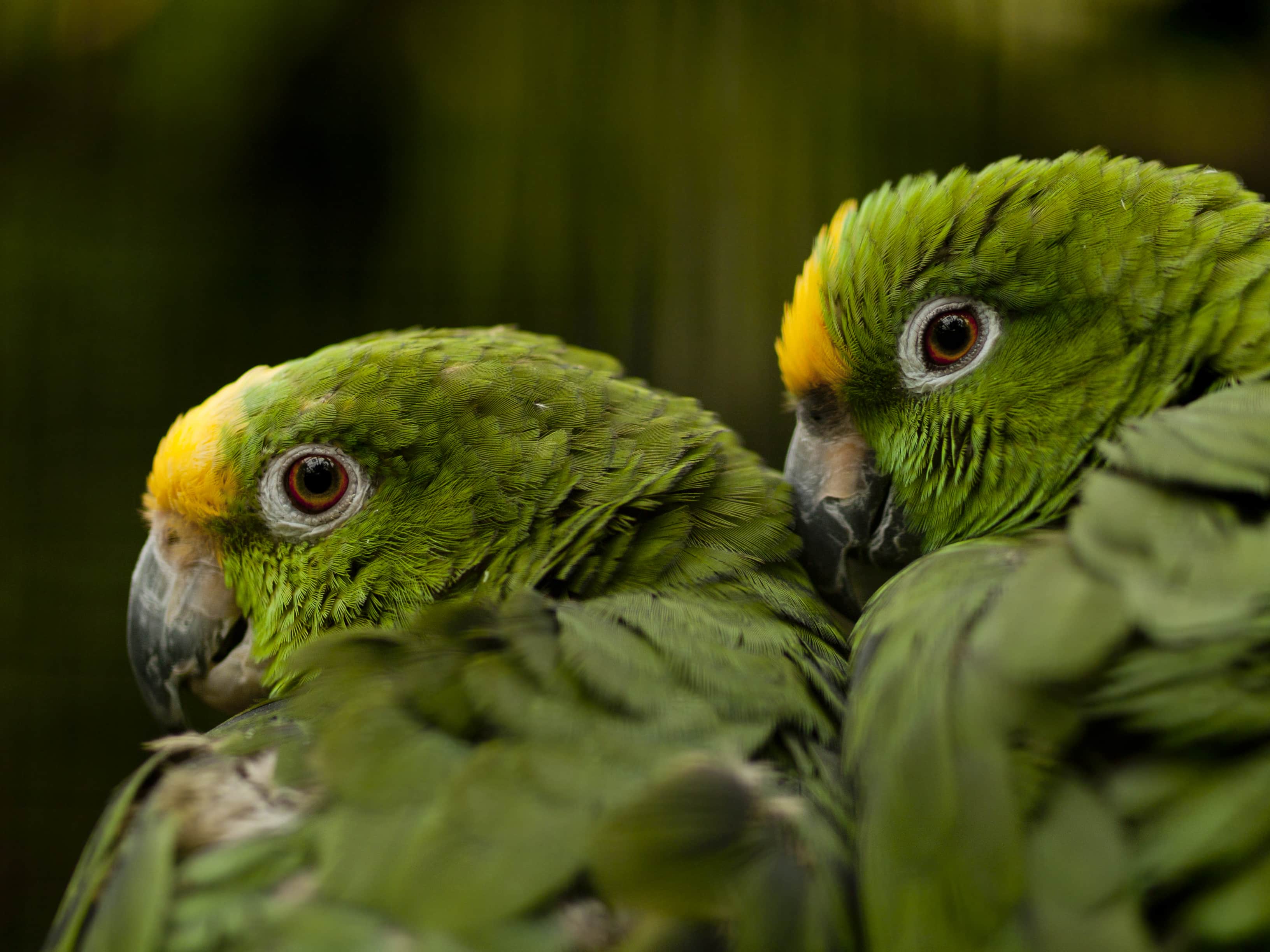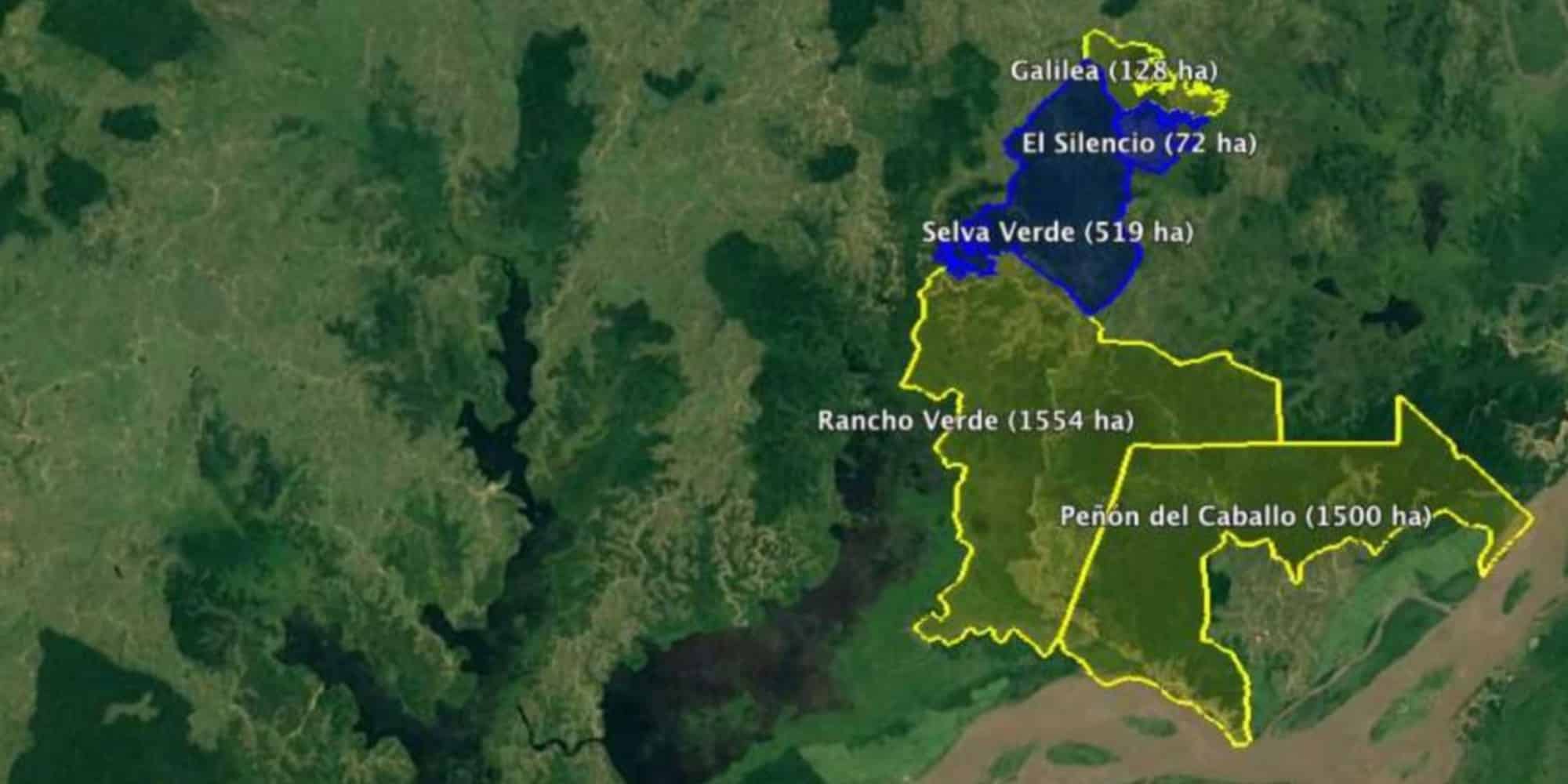Donate
RESERVE PROGRESS
Saving Nature has joined an international consortium to help our local partner, Fundacion Biodiversa Colombia (FBC), create a sustainable future for biodiversity in the wetlands and rain forests of the Magdalena Valley. The trajectory of conservation here hinges on whether the Barbacoas region become a protected area for endemic and threatened species or lose their remaining forests to cattle ranching. The goal is to consolidate one of the largest core forest refuges for endangered species in the region by connecting two of the last forests fragments.
RESERVE GOAL:
Total Corridor Size = 3,773 hectares (5,978 acres)
Total Cost = $2,485,023 (est)
Funding Raised To Date:
Area Protected = 2,837 hectares (7,007 acres)
Cost = $1,868,543
Support Needed:
Remaining Area = 936 hectares (2,311 acres)
Cost = $616,48
Percent of
Forest Left
Forest Left
Number of
Species
Species
Reserve
Goal
Goal
People
Impacted
Impacted
Carbon Dioxide
Absorbed
Absorbed
CONSERVATION FILES
THE PROJECT
BIODIVERSITY HIGHLIGHTS
MEASURING RESULTS
THE PROJECT
Saving Nature has joined an international consortium to help our local partner, Fundacion Biodiversa Colombia (FBC), create a sustainable future for biodiversity in the wetlands and rain forests of the Magdalena Valley. The trajectory of conservation here hinges on whether the Barbacoas region become a protected area for endemic and threatened species or lose their remaining forests to cattle ranching.
The goal is to consolidate one of the largest core forest refuges for endangered species in the region. The plan is to significantly expand the El Silencio and Selva Verde Reserves, which currently total 591 hectares and are in the process of returning to native forests. Purchasing the targeted properties will prevent land degradation and related negative impacts. In addition, through reforestation and restoration of the existing cattle pastures (about 780 ha) we can protect and restore flooded ecosystems and wetlands within the boundaries (nearly 800 ha). Importantly, we would be able to connected isolated forest patches and increase the populations of rare tree species.
The project will protect 1,310 hectares of well-preserved forest and 550 ha of mature secondary forest. Once protected, the Fundacion Biodiversa Colombia will manage the landscape to achieve long-term sustainable conservation.
BIODIVERSITY HIGHLIGHTS

Yellow-crowned Parrots (Amazona ochrocephala)
The Magdalena Valley’s wetlands and rain forests host a unique community of endemic species in its lakes, rivers, forests, and wetlands. As an important migratory stopover, its also critical to the survival of birds from beyond its boundaries. With so many endemic species in the region, protecting them here is almost synonymous with preventing their global extinction. As one of the Pleistocene refugia, the Middle Magdalena Valley accounts for~20% of the species of the Colombian birds (345 species, 4 endemic), rodents (27 species) and primates (6 species, 1 endemic, 1 near endemic), 33% of the bats (58 species), ~21% of ants (~180 species), 4% of the vascular plants (723 species, 1 endemic) and 6% of the amphibians (42 species, 3 endemic).
Within the wetlands and rain forests of the Barbacoas region are three species which are critically endangered and (near) endemic: the brown spider monkey (Ateles hybridus), the blue-billed curassow (Crax alberti), the Magdalena river turtle (Podocnemis lewyana). The brown spider monkey is one of the 25 most endangered primate species worldwide. Between FBC’s reserves and the neighboring lands, at least four groups with more than 10 individuals each have been identified. Large felines, such as jaguars, pumas, jaguarundis and ocelots are also fairly common in the area.
The Magdalena river turtle occurs in the main lakes of the Barbacoas region, in connecting streams and in the main River. The expansion of our reserve will reach the shore of the eastern lake and the main connecting stream, providing critical protection of nesting sites.
One of the most spectacular highlights is the incredible number of diversity of parrots and macaws that soar over the forests. The list includes Orange-chinned Parakeets (Brotogeris jugularis), Saffron-headed Parrots (Pyrilia pyrilia), Blue-headed Parrots (Pionus menstruus), Yellow-crowned Parrots (Amazona ochrocephala), Mealy Parrots (Amazona farinosa), Orange-winged Parrots (Amazona amazonica), Spectacled Parrotlets (Forpus conspicillatus), Brown-throated Parakeets (Aratinga pertinax), Blue-and-yellow Macaws (Ara ararauna), Red-and-green Macaws (Ara chloropterus), and Chestnut-fronted Macaws (Ara severus).
Other important species in the area include:
White-footed tamarins (Saguinus leucopus), EN, endemic to the western bank and lowlands of the middle Magdalena and under protected by public areas in Colombia.
Varied White-fronted Capuchin (Cebus versicolor), EN, near endemic, and under protected by public protected areas in Colombia.
Red-footed tortoise (Chelonoidis carbonaria), EN, presumed extinct in the wild in central Colombia.
Grey-handed night monkeys (Aotus griseimembra), VU.
Lozano’s salamander (Bolitoglossa lozanoi), EN, endemic.
American manatees (Trichechus manatus), VU.
Lowland tapir (Tapirus terrestris), VU, recorded in the area after 20 years.
American crocodile (Crocodylus acutus), VU.
MEASURING RESULTS
The achievements in preventing the loss of biodiversity, restoring ecosystem health, and improving the quality of life for the local and global communities ultimately define our success. Since our projects have a long-term time horizon, we use progressive measures of success:
1. PROTECTING BIODIVERSITY
Movement of wildlife is a critical milestone for validating our work, demonstrating the species are repopulating diminished forests, increasing genetic diversity, and improving resilience. We begin with baseline metrics of mammal and bird species in the protected areas that should disperse through the corridor over time. Then, we evaluate project effectiveness based on the diversity of species moving through the corridor over time. In addition, we install camera traps throughout the corridor, both on the ground and in the canopy to record the species moving through.
2. RESTORING ECOSYSTEM HEALTH
Once we launch a new corridor project, we establish the baseline forest cover. We then annually monitor the quality of the landscape, which improves as forests return, gradually restoring “ecosystem services”, such as preventing silting and landslides. Our team conducts annual site visits to assess reforestation progress using ground surveys, drones, and satellite imagery. Over the longer term, we measure success in completing the corridor connection, based on the percentage of land we have acquired to prevent further destruction.
3. MITIGATING CLIMATE CHANGE
Once reforestation is underway, we begin to accrue carbon sequestration benefits to offset carbon dioxide emissions. As the trees mature, they soak up at least 5 tons of carbon per hectare per year. On average, each US consumer produces about 7 tons of carbon per year.
build core strength
The Barbacoas region is the only wetlands and surrounding forests to survive development and agricultural expansion. Our goal is to consolidate one of the largest core forest refuges for endangered species in the region.
Copyright 2025 Saving Nature | fGreen Theme powered by WordPress

